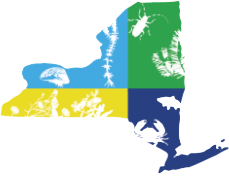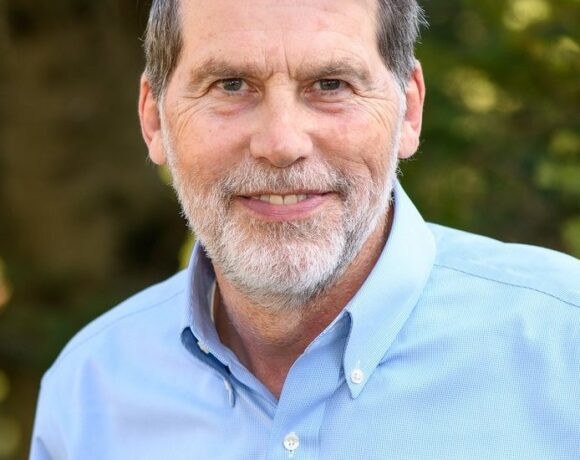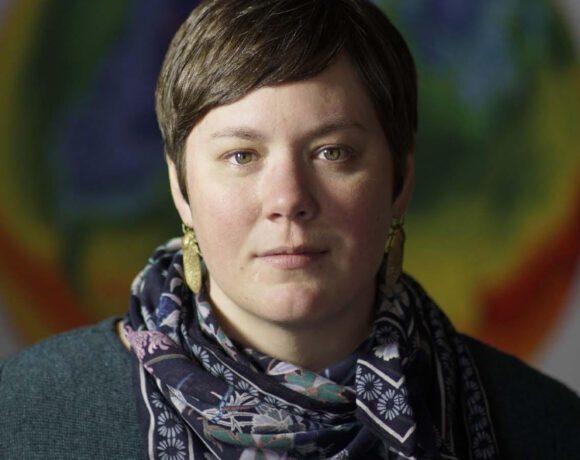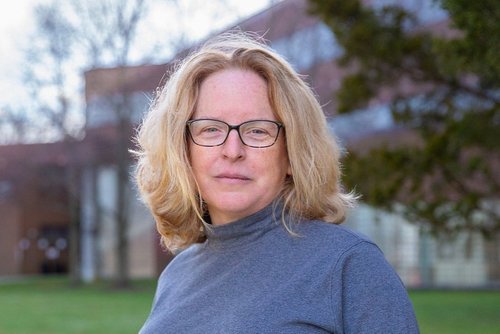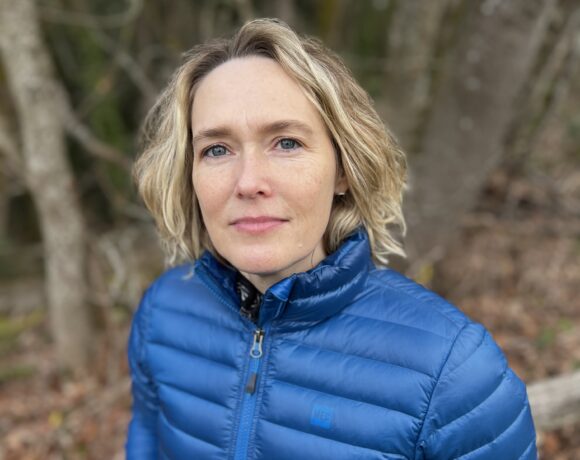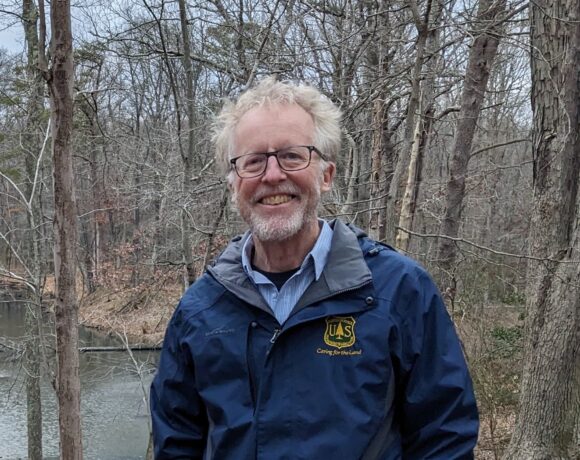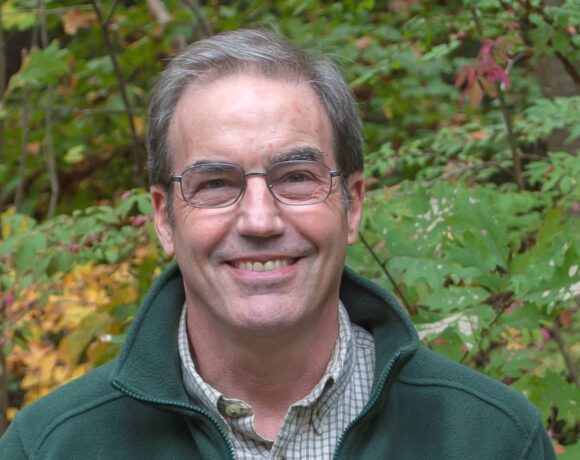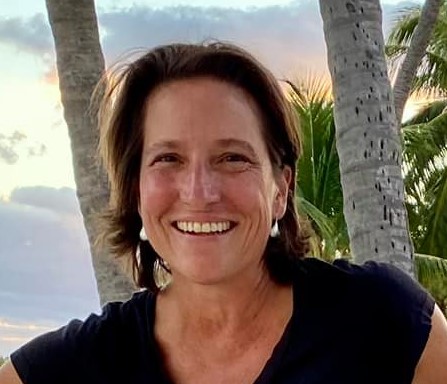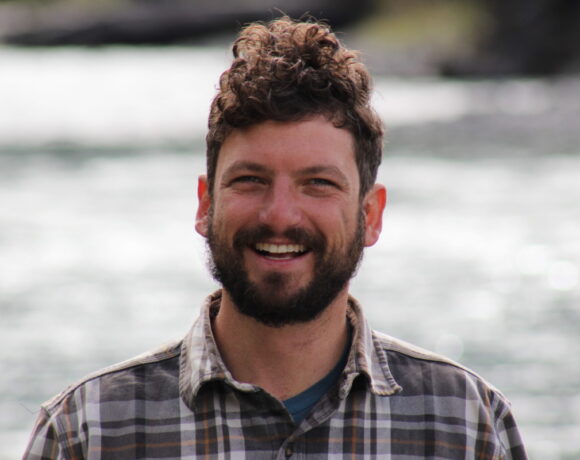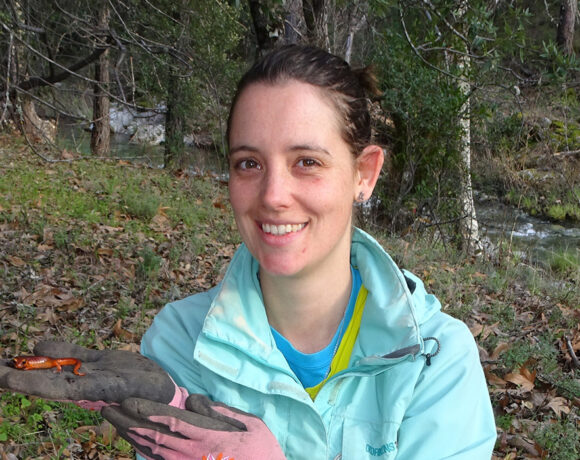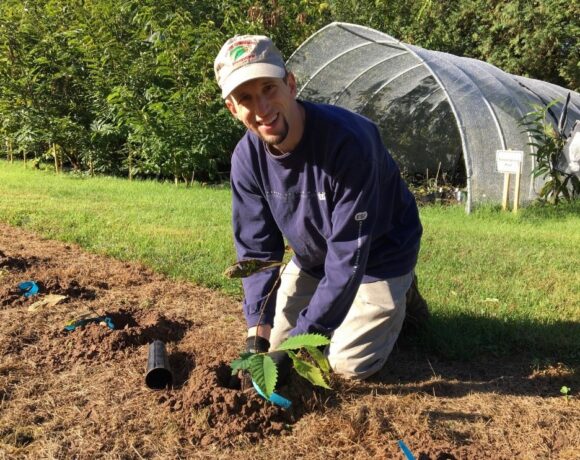This month, we sat down with Dr. Andrew Newhouse, Assistant Director of the American Chestnut Research & Restoration Project at SUNY ESF for an update on the latest research and outlook on chestnut blight.
Watch the interview here:
View transcript:
Justin Dalaba (JD): All right. So Hi Andy, thanks so much for joining us today. We’re really excited to have you here. And so today we’re going to be talking about your work in the American chestnut, which is, as we all know, a keystone species, and really an icon for both human culture and important for the suite of species in the biological community that have relied on it for years. So, just to dive right in, tell us who you are, and tell us about the American Chestnut Research and Restoration project.
Dr. Andrew Newhouse (AN): Sure, my name is Dr. Andrew Newhouse. I work at the SUNY College of Environmental Science and Forestry and Syracuse, called ESF, and the American Chestnut Research and Restoration Project was started somewhere around thirty years ago, when some public chestnut enthusiasts approached professors at ESF, asking about using modern methods to enhance blight resistance in American chestnut to try and save the American chestnut tree. And these two professors, Dr. Bill Powell and Chuck Maynard said sure, they can do that, and it’ll probably take at least five or ten years. I’ve been personally working on the project for about sixteen years right now and I started mostly on the molecular side, actually doing some of the transformations, adding new gene, doing some of those analyses, transferred to kind of working with trees in the field. And now my role is the regulatory review process, because transgenic trees are regulated by three different agencies or I should say, up to three different agencies in the U.S. We need to get approval from those agencies before we can start distributing trees for restoration. And so those regulatory documents and that review processes are my main responsibility right now
JD: Excellent. And so just to take a step back and make sure everyone’s aware. So the blight is an invasive, fungal pathogen. So we’re talking about invasive species. Essentially, that’s caused all kinds of harms. So tell us a little bit about that and some of the research questions around that that your group is working on.
AN: Yeah, good question. And so we’re focused on the native tree which was threatened by, like you, said the invasive of the pathogen. And so there are some interesting questions about that also, because some of the potential alternatives or replacement trees that have been considered are Asian chestnut species, Chinese chestnut or Japanese chestnut. And so there are some non-native trees that have been considered or incorporated into breeding programs which isn’t necessarily a bad thing, but it brings up some interesting questions about maybe agencies that have restrictions about only planting native species and so on. Um, but ah, research questions range from genetic engineering and molecular stuff about when we add a new gene, where did the gene go in the genome and what’s nearby? Everything on up to forestry and ecology questions about actually implementing a restoration program with the tree that has been essentially absent from the landscape for about a century. And so there are lots of questions related to that, and changing climate integrated into that, and so on.
JD: Questions are numerous absolutely, and I’m wondering if you could tell me a little more like. Describe some of the methodology you’re using when you’re talking about developing this blight resistance. So what does that look like in terms of the process?
AN: Yeah, we use uh generally, I would call it genetic engineering or biotechnology tools to enhance resistance. And the way we’ve done, that is to add a new gene to the American chestnut. The gene is from wheat, so it’s something that we eat regularly. Similar genes are found in a wide variety of native wild species as well. So this isn’t a new thing to the environment or to people’s diets. But as far as the techniques, we like, I said, use the genetic engineering. The way we do that is with the bacteria. It’s a soil bacterium of agro-bacterium that moves some of its DNA into plants that happens naturally. So, there are a number of plants that already have genes from this bacteria. They’ve just become integrated into these plant genomes, but we modified that bacteria in the lab. So it moves the genes that we want, and that can be transferred into a single cell of chestnut, and then that can be regenerated into a whole tree through a process called tissue culture. And then other techniques we’re looking at, like, I said, some of the environmental interaction questions and restoration implementation questions, and we have several different types of field studies in place that we can currently only conduct under permits from the USDA, but we’re hoping to expand those out, if and when we get regulatory approval to do so.
JD: that’s all fascinating. And I did want to dive a little deeper into. There is this key difference between resistance versus tolerance. So could you describe what that means in terms of the goal for the tree?
AN: Sure, not everyone agrees on those terms. But, generally the way I understand it is that resistance is kind of the broader term of a way, that a host or the tree in this case can resist or prevent damage by a pathogen in this case. And, so resistance is kind of the broad term to encompass several different ways that could happen, and tolerance is a more specific term that would describe a situation where the pathogen can still infect the host. But blight fungus still infects the tree, so transgender trees still get blight. But when a Chinese chestnut or a transgender chestnut tree gets the blight, it doesn’t cause as much damage. So the tree tolerates that infection without dying, where nearly all wild type American chestnut trees; Once they get blight, it’s just a matter of time until that that tree, or at least the above ground portion of that tree, is dead, and then it can send up new sprouts sometimes, but they rarely reach maturity in the wild.
JD: Right so in summary, essentially resisting is the tree’s ability to sort of endure and suppress that stress that’s happening on the tree, versus tolerance being they can kind of coexist.
AN: Yeah, that’s a That’s an important point, I think, too, because of the way the trans gene works. In our case the gene is called oxalate oxidase, and it’s not an anti-fungal gene. It’s not preventing infection. So that’s a key part of that tolerance terminology. It’s not killing the fungus or preventing it from infecting the tree. It’s instead breaking down a toxin that’s produced by the fungus, and so the fungus can’t do as much damage to the tree.
JD: Hmm. Awesome thanks for explaining that. And that’s definitely helpful to know. Um, I wanted to actually sidestep a little and kind of go back to how you became involved in this research and ask, You know a more personal question, which is, do you have a personal path that sort of led you down this? How did you become involved in this? Tell us about your background.
AN: Sure, I did my undergrad in biology and environmental science, and was really interested in being outside in general, but kind of conservation and environmental restoration questions. Um, I thought I definitely wanted to do something with ecology, and liked the outdoors and liked being in the woods. And then one summer, as an undergrad, I did a research project with molecular biology looking at DNA in a lab. And so I really like those molecular biology tools, too. That kind of resonated somehow, and I enjoyed the techniques. So, as I started thinking about grad school, I was really looking for some way to combine the environmental conservation questions and the molecular DNA techniques, and that led me to the ESF. Actually, I started with Dr. Bill Powell. At the time I was working on American elm trees with a similar type of project, creating a transgenic elm tree to uh resist Dutch elm disease in that case, and then I worked on a couple of other projects for a short time after that, but then came back to the chestnut project, and I really enjoyed that opportunity to combine those interests of molecular tools with environmental conservation applications. And more recently I’ve kind of integrated a separate, maybe regulatory policy side, which is not something that I ever really envisioned. But I think that’s a really important part of using these tools for conservation and not just for, say, agriculture where they’ve typically been applied, historically.
JD: Yeah, absolutely. And you know from the big picture what an incredible opportunity to contribute to this broader effort to bring back a species essentially for functional extinction which is incredibly rare. So, you’ve mentioned, the Dutch elm disease, and I did want to dive a little further into that in a minute. But I want to ask next; That’s actually a good segway into – how does your work relate to this broader collective knowledge and restoration effort across the Eastern U.S for the American chestnut?
AN: Yeah, that’s a good question. There are several ways that this is pretty unique compared to other efforts. But I think that an important part of the chestnut example here is that so many of those other techniques have been tried in the past that people try for a while planting Chinese or hybrid chestnut trees that really aren’t very well suited for restoration. In the 1960s and 70s, people tried a process called mutagenesis, exposing seed to extremely high levels of radiation to induce mutations, and hopefully, some of those mutations might be beneficial. People have tried biocontrols, have tried fungicides and various things. And so all of these different things which have been successful for other plants or for other crops, but none of them had really been effective in restoring the American chestnut. And so, having that context of comparison for using genetic engineering compared to all of these other tools, is, I think, a really important part of the placement of this, I guess, within this and broader scope of research. And then I think it’s important also to think about the pest in this case, the blight fungus. Other researchers are working on engineering the blight fungus so that it can more easily spread a virus. So this is an idea that’s been pretty well understood in the past, where the fungus can be infected with a virus and weaken the fungus, and thereby protect the tree, but that doesn’t work very well right now, because the fungus can’t spread the virus easily, unless it’s engineered. So if we can engineer the fungus, so it more easily spreads the virus. Does that introduce a different type of question? Because we’re talking about the invasive pathogen in this case, instead of the native tree that’s being potentially engineered. So that’s not in wide use on the landscape or anything, yet. It’s being tested. But there’s some asking questions.
JD: Yeah, And so I guess, getting back to my earlier question. So how could this effort or methodology be applied to other species? And what would that look like? So, for example, with Dutch elm disease?
AN: Yeah, that’s really important. I think one of my biggest goals with this is that not only we can hopefully restore the American chestnut, but hopefully start to introduce some of these tools as valid conservation or restoration techniques. And, so we’re already looking at some chestnut relatives. There’s a tree called the Ozark chinquapin, same genus as American chestnut, and so some of the same tools and same genes might be effective in protecting that tree from chestnut blight. Like I said, I started my master’s work, or I did my Master’s thesis on American elm. That was several years ago now, but we have another post-doc researcher working on elm again currently. And, so there’s potential for not only Dutch elm disease, but also an unrelated disease called elm yellows. That seems to be in some ways more serious and harder to deal with, with traditional methods compared to Dutch elm disease. So there’s a lot of potential there. We’re looking at. Not yet. We’re thinking about, I guess, looking at a beech leaf disease, a very recent threat that’s really serious on beech trees in some parts of the State already, and so I would definitely hope that these biotech tools can at least be considered as valid options for tree restoration.
JD: Yeah, I definitely know the beech leaf disease in New York has been a huge point of conversation, and so I’d be interested to hear more about the future for tools like this to be applied for something like that. And I guess while we’re on that vein, what is your outlook? You know you’ve been doing this work for quite some time you’ve been involved in a handful of projects. So I’m curious to hear your perspective on what’s the outlook with this type of work? And what do you hope the long-term impact of your work in particular will be?
AN: I would say, my outlook now is a lot more optimistic than it would have been five or ten years ago. So at this point we have these documents submitted to the regulatory agencies for chestnut specifically at least, and for the genetic engineering tools. Ten years ago we were told It’s probably not very realistic to do this, because I mean you can study it, and you know you can do the lab research, and you can test it on a small scale. But it’s just not realistic to apply these tools for conservation use, because the process is too complicated and too expensive, and it’ll take too long, and it’s just not realistic. And, we’ve shown that it is, that we’re going through it. I’m very optimistic now that eventually, we don’t know exactly when, but hopefully next year, maybe, or sometime in the near future, anyway, we’ll be able to start distributing, transgenic American chestnuts. And then, if things continue to go well with that, then we’ll be able to address other diseases that that threaten native plants in New York, and elsewhere.
JD: well, it’s definitely encouraging to hear. And it’s not often, especially in the field of invasive species, that you have an optimistic outlook. So I’m glad to hear that. And so when you’re when you’re communicating with these regulatory agencies, if you could kind of distill into like your one to two sentence takeaway. What are the most important things to communicate to both land managers and restoration practitioners?
AN: I think the biggest thing that was an emphasis in the regulatory documents, and an important consideration for a restoration is that the genetic engineering tools are no riskier than traditional alternatives. That people ask if there could possibly be conceivable risks. And well, the answer is always yes to that question. Any choice we make could potentially have risks, and so we always consider this in comparison to traditional methods. Traditional breeding is the most common one. But any sort of conservation techniques, I guess. And so yes, the important part is that genetic engineering is a very precise tool and is not inherently riskier than traditional methods.
JD: Right. Yeah, absolutely. So, in terms of, you know, on the ground practice someone sees they’re fortunate enough to actually find in and identify a chestnut on the ground with blight. What can they do?
AN: Yeah, they are still out there. There are American chestnut trees on the landscape. The tricky thing is that they rarely live to maturity. So if this is something that’s on your land or on land that you have authority to make decisions about, I guess, there are some ways to kind of keep the trees healthy for a time. It’s not really possible to treat them indefinitely, but there’s something called mud packing where you just take a scoop of mud and push it onto the canker, and then wrap up the plastic so it stays moist for a few months. That is probably a mechanism of the soil microbes that actually kind of compete with the blight fungus, and that can heal up a canker, that can treat the tree kind of temporarily, but it’s only that one canker. It’s only the one area that you’re treated. That’s protected, So it’s difficult, especially if a canker a high up on a tree. But the important part, if there is a flowering tree, or you can preserve trees for a little longer, is that once we have regulatory approval to distribute trees, we’ll also be able to distribute pollen. We can distribute transgenic chestnut pollen, and so that could be potentially used to pollinate a wild tree. And then, if you can harvest those chestnuts, some of them will inherit the trans gene, and then it could be used for planting and restoration purposes.
JD: that’s fascinating. I hadn’t heard of that technique quite literally putting a mud bandage on a wound That’s be cool. So, looking ahead for your Research and Restoration Project, you know what’s ahead for you? What’s ahead for the group? What do you guys, You kind of hinted at some future research directions? But yeah, I’m curious to hear your perspective on the future outlook.
AN: Yeah. Well, our restoration team has developed this really unique set of expertise; um, of the molecular techniques for one. But the field management, the planting under the permits for biotech trees. But also actually going through this regulatory process to evaluate and review transgenic trees. And so, you would absolutely hope to apply these tools to other trees, or if other research groups are already working with something like ash. For example, there’s some interesting work on ash and emerald ash borer at Purdue University, I think. And so, anyway, other groups are working on transgenic trees with potential conservation applications. And so, if we could share some of our expertise, or at least kind of set a precedent where projects like that have a path through the regulatory process, we would really love to see biotechnology become a valid tool for conservation.
JD: Yeah, absolutely. Well, I appreciate you walking me through all of this, and this is, I’ve learned a lot. But I know that you guys also have tons of great resources on your website. So really, my last question for you is, is there anywhere else you would like us to link to in terms of sharing this additional information with our group.
AN: I would point you to the American chestnut foundation, but the whole national group. And then there’s a New York chapter of the American Chester Foundation. Also, people can join. That’s probably the best way to stay in touch and hear updates, and that’s definitely a valuable resource. If you’re interested in really following up the national group, the chestnut foundation has science coordinators and scientists to help people with things like planting and setting up bigger plantings, and a lot of resources there, too.
JD: well, we’ll be sure to link to that, as well as the American Chestnut Research and Restoration project at ESF, and I just wanted to thank you again for giving us your time and insight into this. It’s a really exciting project with an optimistic outlook. So we’re happy to be able to share this information with our audience. And thank you again.
AN: Sure. Thank you for the invitation.
For more info, visit:
American Chestnut Foundation website: https://acf.org/
SUNY ESF American Chestnut Research and Restoration Project website: https://www.esf.edu/chestnut/
More researcher spotlights:

